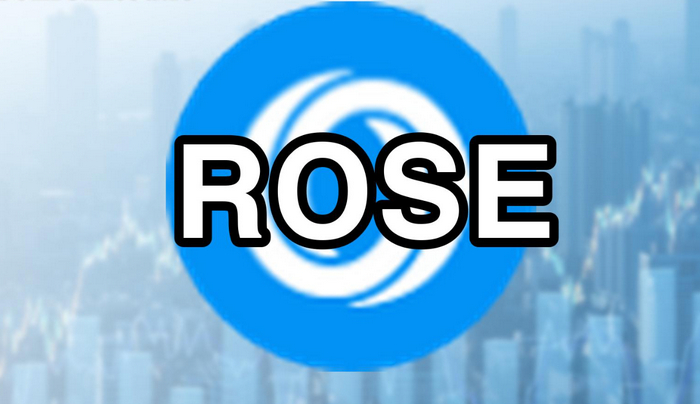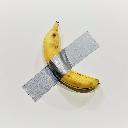-
 Bitcoin
Bitcoin $97,126.0652
2.56% -
 Ethereum
Ethereum $1,823.5318
2.64% -
 Tether USDt
Tether USDt $1.0001
0.02% -
 XRP
XRP $2.1318
0.63% -
 BNB
BNB $601.7237
0.50% -
 Solana
Solana $146.0494
1.59% -
 USDC
USDC $1.0000
0.00% -
 Dogecoin
Dogecoin $0.1711
2.10% -
 Cardano
Cardano $0.6674
1.85% -
 TRON
TRON $0.2465
0.71% -
 Sui
Sui $3.3274
2.03% -
 Chainlink
Chainlink $13.6318
1.28% -
 Avalanche
Avalanche $19.3593
-2.00% -
 UNUS SED LEO
UNUS SED LEO $8.6894
-0.25% -
 Stellar
Stellar $0.2587
0.83% -
 Shiba Inu
Shiba Inu $0.0...01276
1.70% -
 Toncoin
Toncoin $3.0106
-0.07% -
 Hedera
Hedera $0.1745
1.12% -
 Bitcoin Cash
Bitcoin Cash $364.4245
1.64% -
 Hyperliquid
Hyperliquid $21.0883
2.87% -
 Litecoin
Litecoin $89.2345
7.57% -
 Polkadot
Polkadot $3.9269
0.02% -
 Dai
Dai $1.0002
0.02% -
 Monero
Monero $285.3542
-0.32% -
 Bitget Token
Bitget Token $4.2801
-0.33% -
 Ethena USDe
Ethena USDe $1.0005
0.03% -
 Pi
Pi $0.5807
-0.15% -
 Pepe
Pepe $0.0...08114
3.32% -
 Bittensor
Bittensor $362.4362
-0.34% -
 OKB
OKB $51.0484
0.70%
What is the issue volume of ROSE coins? An article introduces the application scenarios of ROSE coins
ROSE coins, the native token of the Oasis Network, have a maximum issuance volume of 10 billion, with approximately 2.4 billion in circulation as of August 2023.
Nov 06, 2024 at 01:49 am

1. What is the Issuance Volume of ROSE Coins?
ROSE is the native token of the Oasis Network, a decentralized blockchain platform focused on data confidentiality and computation. The maximum issuance volume of ROSE is 10 billion tokens, and as of August 2023, approximately 2.4 billion ROSE tokens are in circulation.
2. Application Scenarios of ROSE Coins
ROSE coins have various application scenarios within the Oasis Network ecosystem:
- Staking: ROSE holders can stake their tokens to become validators and earn rewards for participating in the network's consensus mechanism. Staking also helps secure the network.
- Gas Fees: ROSE is used to pay for gas fees associated with transactions and smart contract execution on the Oasis Network.
- Governance: ROSE allows holders to participate in network governance by voting on proposals and shaping the future of the platform.
- Developer Incentives: Oasis Network provides grants and rewards in ROSE to developers who build and contribute to the ecosystem.
- Token Swaps: ROSE can be used to participate in token swaps with other cryptocurrencies on decentralized exchanges within the Oasis Network.
- Payment and Transfer: ROSE can be used as a means of payment and value transfer within the Oasis Network ecosystem and beyond.
3. Conclusion
ROSE coins play a vital role in the functioning of the Oasis Network. They are used for various purposes, including staking, gas fees, governance, developer incentives, token swaps, and payments. As the Oasis Network continues to grow and evolve, the demand for ROSE coins is expected to increase, further expanding their utility and value.
Disclaimer:info@kdj.com
The information provided is not trading advice. kdj.com does not assume any responsibility for any investments made based on the information provided in this article. Cryptocurrencies are highly volatile and it is highly recommended that you invest with caution after thorough research!
If you believe that the content used on this website infringes your copyright, please contact us immediately (info@kdj.com) and we will delete it promptly.
- The institutional acceptance of crypto around the world has accelerated significantly recently, developing hand in hand with better-defined regulation.
- 2025-05-07 23:35:13
- XRP Has Evolved Beyond Payments, Now Powering Finance, Gaming, NFTs, and More
- 2025-05-07 23:35:13
- XRP Overtakes Bitcoin in Hourly Futures Liquidations
- 2025-05-07 23:30:12
- Agglayer Launches Pessimistic Proofs to Mainnet, Sparking Integrations Across Multiple Protocols
- 2025-05-07 23:30:12
- Binance Coin (BNB) Price Will Soar to $1,275 by the End of 2025, Says Standard Chartered
- 2025-05-07 23:25:12
- Pi (PI) Price Prediction: Will the Pi Coin Price Continue Climbing or Face Further Declines?
- 2025-05-07 23:25:12
Related knowledge

What is Ethereum’s Slashing mechanism and how to punish malicious behavior?
Feb 20,2025 at 03:08am
Key PointsOverview of slashingDifferent types of slashing in EthereumIncentives and consequences of slashingIdentifying and reporting slashed validatorsOngoing discussions and potential improvementsEthereum's Slashing Mechanism: Punishing Malicious BehaviorEthereum's slashing mechanism is an essential tool for ensuring network security and punishing mal...

What is the verifier node of Ethereum and how to become a verifier?
Feb 19,2025 at 06:00pm
The Verifier Node of Ethereum: A Comprehensive GuideKey Points:What is a Verifier Node?How to Become a Verifier NodeResponsibilities and Rewards of a Verifier NodeMinimum Requirements for Becoming a Verifier NodePotential Difficulties in Running a Verifier Node1. What is a Verifier Node?A Verifier Node is an independent entity on the Ethereum network th...

What is Ethereum’s staking, and how to participate and earn money?
Feb 19,2025 at 04:37pm
Key Points:Understanding Ethereum's Staking MechanismSteps to Participate in StakingBenefits and Rewards of StakingSecurity and Risk ConsiderationsTechnical Requirements and Hardware OptionsPotential Challenges and Troubleshooting TipsFAQs on Ethereum StakingWhat is Ethereum's Staking?Proof-of-Stake (PoS) is a consensus mechanism used in blockchain netw...

What is Ethereum’s DAO (Decentralized Autonomous Organization) and how does it work?
Feb 20,2025 at 03:12am
Key PointsDefinition and Structure of a DAOGovernance and Decision-Making in DAOsBenefits and Use Cases of DAOsChallenges and Limitations of DAOsWhat is Ethereum's DAO (Decentralized Autonomous Organization) and How Does It Work?Definition and Structure of a DAOA Decentralized Autonomous Organization (DAO) is an innovative governance and management fram...

What is Ethereum's multi-signature wallet and how to improve security?
Feb 20,2025 at 02:18pm
Key Points:Understanding the Concept of a Multi-Signature WalletBenefits and Drawbacks of Multisig WalletsRequirements for Setting Up a Multisig WalletStep-by-Step Guide to Generating a Multisig WalletImplementing Strategies for Enhanced Security1. Understanding the Concept of a Multi-Signature WalletA multi-signature (multisig) wallet in the Ethereum e...

What is Ethereum's oracle and how to provide data for smart contracts?
Feb 21,2025 at 01:30am
Key Points:Understanding the concept of oracles in EthereumExploring different types of oraclesDetailed guide on how to provide data for smart contractsAddressing potential challenges and considerationsWhat is Ethereum's Oracle?Oracles are crucial components in the Ethereum ecosystem, enabling smart contracts to access real-world data and off-chain even...

What is Ethereum’s Slashing mechanism and how to punish malicious behavior?
Feb 20,2025 at 03:08am
Key PointsOverview of slashingDifferent types of slashing in EthereumIncentives and consequences of slashingIdentifying and reporting slashed validatorsOngoing discussions and potential improvementsEthereum's Slashing Mechanism: Punishing Malicious BehaviorEthereum's slashing mechanism is an essential tool for ensuring network security and punishing mal...

What is the verifier node of Ethereum and how to become a verifier?
Feb 19,2025 at 06:00pm
The Verifier Node of Ethereum: A Comprehensive GuideKey Points:What is a Verifier Node?How to Become a Verifier NodeResponsibilities and Rewards of a Verifier NodeMinimum Requirements for Becoming a Verifier NodePotential Difficulties in Running a Verifier Node1. What is a Verifier Node?A Verifier Node is an independent entity on the Ethereum network th...

What is Ethereum’s staking, and how to participate and earn money?
Feb 19,2025 at 04:37pm
Key Points:Understanding Ethereum's Staking MechanismSteps to Participate in StakingBenefits and Rewards of StakingSecurity and Risk ConsiderationsTechnical Requirements and Hardware OptionsPotential Challenges and Troubleshooting TipsFAQs on Ethereum StakingWhat is Ethereum's Staking?Proof-of-Stake (PoS) is a consensus mechanism used in blockchain netw...

What is Ethereum’s DAO (Decentralized Autonomous Organization) and how does it work?
Feb 20,2025 at 03:12am
Key PointsDefinition and Structure of a DAOGovernance and Decision-Making in DAOsBenefits and Use Cases of DAOsChallenges and Limitations of DAOsWhat is Ethereum's DAO (Decentralized Autonomous Organization) and How Does It Work?Definition and Structure of a DAOA Decentralized Autonomous Organization (DAO) is an innovative governance and management fram...

What is Ethereum's multi-signature wallet and how to improve security?
Feb 20,2025 at 02:18pm
Key Points:Understanding the Concept of a Multi-Signature WalletBenefits and Drawbacks of Multisig WalletsRequirements for Setting Up a Multisig WalletStep-by-Step Guide to Generating a Multisig WalletImplementing Strategies for Enhanced Security1. Understanding the Concept of a Multi-Signature WalletA multi-signature (multisig) wallet in the Ethereum e...

What is Ethereum's oracle and how to provide data for smart contracts?
Feb 21,2025 at 01:30am
Key Points:Understanding the concept of oracles in EthereumExploring different types of oraclesDetailed guide on how to provide data for smart contractsAddressing potential challenges and considerationsWhat is Ethereum's Oracle?Oracles are crucial components in the Ethereum ecosystem, enabling smart contracts to access real-world data and off-chain even...
See all articles





















































































